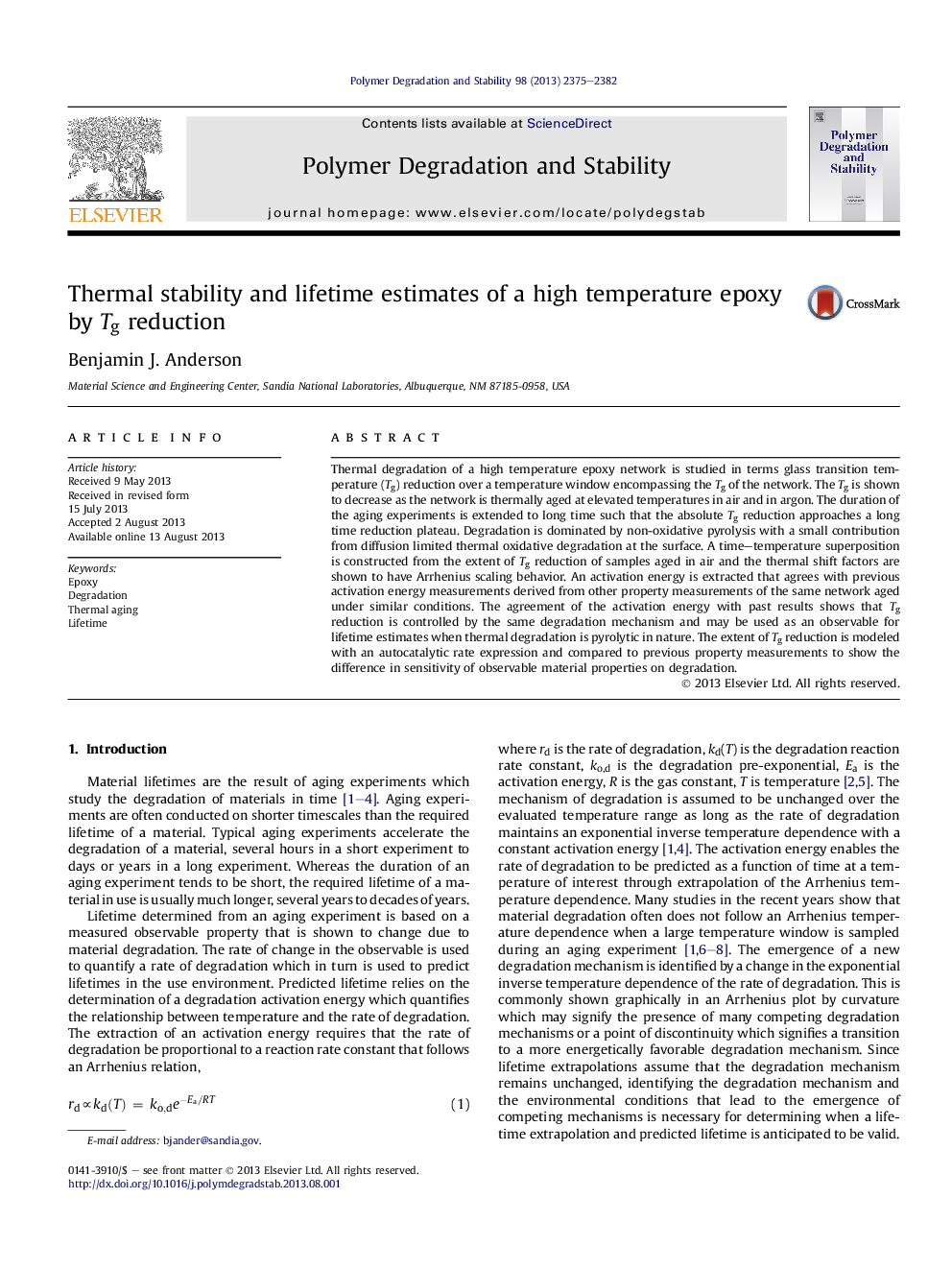| Article ID | Journal | Published Year | Pages | File Type |
|---|---|---|---|---|
| 5202280 | Polymer Degradation and Stability | 2013 | 8 Pages |
Abstract
Thermal degradation of a high temperature epoxy network is studied in terms glass transition temperature (Tg) reduction over a temperature window encompassing the Tg of the network. The Tg is shown to decrease as the network is thermally aged at elevated temperatures in air and in argon. The duration of the aging experiments is extended to long time such that the absolute Tg reduction approaches a long time reduction plateau. Degradation is dominated by non-oxidative pyrolysis with a small contribution from diffusion limited thermal oxidative degradation at the surface. A time-temperature superposition is constructed from the extent of Tg reduction of samples aged in air and the thermal shift factors are shown to have Arrhenius scaling behavior. An activation energy is extracted that agrees with previous activation energy measurements derived from other property measurements of the same network aged under similar conditions. The agreement of the activation energy with past results shows that Tg reduction is controlled by the same degradation mechanism and may be used as an observable for lifetime estimates when thermal degradation is pyrolytic in nature. The extent of Tg reduction is modeled with an autocatalytic rate expression and compared to previous property measurements to show the difference in sensitivity of observable material properties on degradation.
Related Topics
Physical Sciences and Engineering
Chemistry
Organic Chemistry
Authors
Benjamin J. Anderson,
